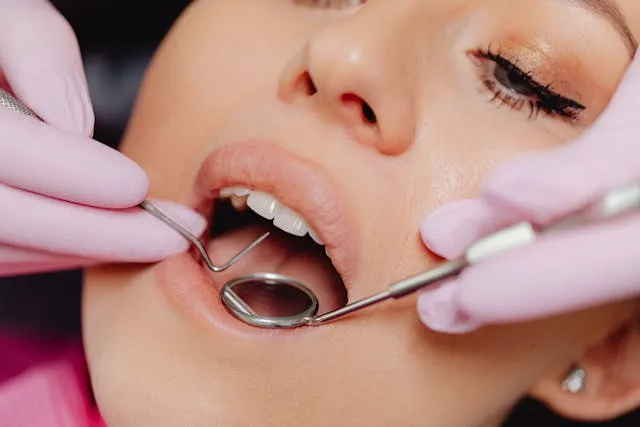Introduction
The dental industry is perpetually evolving, and as patient volumes increase, the complexities of managing claims and payments escalate. Consequently, streamlining these processes becomes essential for operational efficiency and ensuring high levels of patient satisfaction. Dental practices often juggle numerous claims daily, and without a structured approach, this can lead to bottlenecks and delayed reimbursements. This article explores practical strategies for optimizing dental claims and payments, mainly through integrating innovative technology, comprehensive staff training, and clear patient communication. By adopting these strategies, dental offices can enjoy a significant reduction in administrative burdens, faster claim processing times, and a marked improvement in overall patient experiences. These changes enhance practice profitability and build stronger patient-practitioner relationships based on trust and efficiency.
Also Read: Fashion 6 Cell 10.8V 4001mAh-5000mAh Replacement Laptop Battery for Asus
Understanding Insurance Policies
A thorough understanding of insurance policies is paramount in effectively managing dental claims and securing timely payments. Each policy has unique coverage limits, exclusions, and stipulations influencing the claims approval process. Dental practices must consistently update their knowledge of these policies to prevent costly claim rejections. Employing comprehensive dental claims support and resources can significantly aid this endeavor by offering insights and tools tailored to navigating complex insurance landscapes. These resources enhance a practice’s ability to handle claims precisely and expeditiously.
Furthermore, mastering the details of various insurance plans empowers dental offices to communicate more effectively with their patients regarding potential out-of-pocket expenses. This transparency helps to manage expectations and avoid financial surprises once procedures are completed. Ultimately, a well-informed practice sees increased efficiency in claims processing and builds stronger patient rapport by delivering honest, upfront information about insurance coverage.
The Role of Technology
Incorporating cutting-edge technology into the claims process is imperative for dental practices aiming to achieve maximum efficiency. Deploying automated claims systems and sophisticated software solutions can streamline countless administrative tasks, significantly reducing the potential for human error and oversight. Such technologies foster real-time updates, allowing practices to monitor the status of each claim closely, thus facilitating quicker resolution times and minimizing disputes with insurers.
Integrating electronic health records (EHR) within dental practices exemplifies the transformative power of technology. These systems allow for the rapid retrieval and sharing of pertinent patient data, directly accelerating the claims process. This level of transparency enhances communication and expedites insurers’ review and approval process. By adopting these innovative solutions, dental practices can significantly curtail administrative costs, allowing Staff to allocate more time and resources toward delivering exceptional patient care.
Importance of Staff Training
Investing in comprehensive staff training is an indispensable strategy for ensuring accuracy and efficiency in the claims process. Staff equipped with a deep understanding of insurance policies and fluent in utilizing technological tools are poised to process claims more accurately and swiftly. Regular training ensures that staff remain current with the latest policy changes and industry standards, reducing errors that could delay payments or confuse patients.
Moreover, training fosters employee empowerment, boosting their confidence in navigating complex claims and insurance scenarios. This preparedness is especially beneficial during high demands, ensuring the dental practice operates smoothly without compromising accuracy. By prioritizing staff development, dental practices enhance their reputation for reliability and efficiency, ultimately increasing patient satisfaction and loyalty.
Additionally, well-trained Staff are better equipped to handle complex or unusual cases, ensuring patients’ needs are addressed quickly and effectively. The ongoing development of staff skills also cultivates a positive work environment where employees feel valued and supported. By fostering a culture of continuous learning, practices demonstrate their commitment to quality service and patient care. Training programs can also improve team collaboration, as staff members are likelier to share best practices and solutions to common challenges. Ultimately, investing in staff education contributes to the overall success and growth of the practice, allowing it to thrive in a competitive healthcare landscape.
Enhancing Patient Communication
Effective communication with patients regarding their insurance coverage and the claims process is critical for fostering trust and ensuring high satisfaction levels. Patients often lack a nuanced understanding of their insurance policies, leading to confusion and frustration. Dental practices must work to bridge this gap by providing clear, straightforward explanations regarding coverage limits, potential out-of-pocket expenses, and the claims process.
By engaging patients directly and encouraging them to ask questions, dental practices can facilitate a better understanding of individual insurance benefits. This proactive and transparent communication strategy enhances mutual trust and smooths claim processing within the practice. Transparently addressing patient concerns helps mitigate misunderstandings, ultimately leading to a more seamless patient experience and a strengthened patient-practitioner relationship.
Tips for Improving Efficiency
- Establish and maintain consistent communication channels with insurance providers. Regular interactions ensure issues are promptly resolved, facilitating a steady flow of claim approvals and reducing delays.
- Conduct thorough audits of the claims process periodically to identify inefficiencies and potential areas for improvement. This proactive approach aids in refining procedures and optimizing workflow.
- Adopt tailored digital tools designed explicitly for claims management. Leveraging these technologies can significantly enhance tracking, processing, and the overall efficiency of claims management, minimizing risk and expediting outcomes.
Implementing these strategies equips dental practices to streamline their operations effectively, resulting in swift and accurate claims handling that ultimately enhances patient satisfaction and operational productivity. By embracing continuous improvement, dental practices position themselves for sustained success in a competitive healthcare market.
Conclusion
Streamlining dental claims and payments involves a well-rounded approach that integrates a comprehensive understanding of insurance policies, strategic use of technological advancements, dedicated staff training, and active patient communication. By concentrating their efforts on these critical areas, dental practices stand to improve significantly their claims management processes, minimize inefficiencies, and deliver exceptional service to their patients. These improvements not only boost the practice’s operational efficacy but also enhance the patient experience, ultimately fostering long-term loyalty and trust that benefit both the practice and its clientele.



